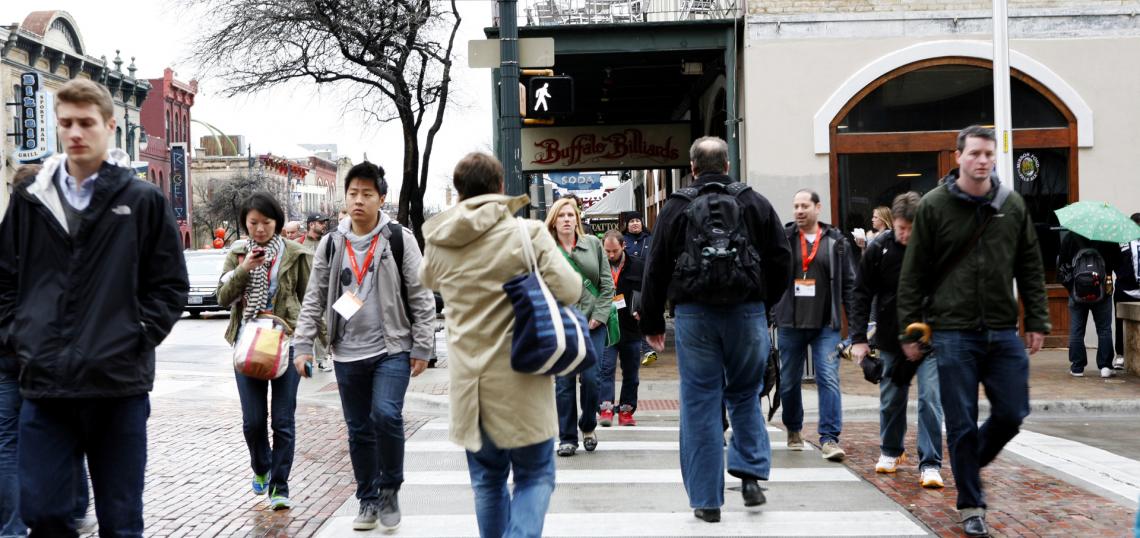While the ongoing global pandemic kept Austin traffic relatively light for much of 2021, the city has already seen a record number of people killed in vehicle crashes this year—and of the 110 fatalities so far, more than 30, or about 30 percent, were pedestrians.
There are a number of approaches to reducing the total number of vehicle-crash fatalities to zero, up to and including the elimination of most personal cars and trucks. While we’re getting all that sorted out, the city is conducting research and taking a variety of interim measures to increase pedestrian safety.
Through research, design improvements, and its participation in the Vision Zero network, Austin is working to bring the number of people killed in traffic crashes to none. Designing streets with pedestrian safety as a key priority is one way the city can get closer to this goal. Some design elements Austinites may notice every day are built to keep pedestrians safe when using city streets.
Connected cars (and other vehicles)
Partnered with private companies Traffic and Parking Control Company and Siemens, Austin is operating a pilot program for a system that alerts drivers when pedestrians have activated a signal at a nearby crosswalk.
The system is currently in operation at the intersection of Rosewood Avenue and Angelina Street in Central East Austin. In addition to setting off flashing lights in the crosswalk, a pedestrian who pushes a button at the intersection will send a signal to vehicles equipped to connect to the system that someone is crossing the roadway.
While the number of vehicles that can connect electronically to traffic infrastructure such as crosswalk signals is currently small, it’s a feature that is expected to be included in newly manufactured models in the near future. The city hopes to get ahead of that development, using the pilot program in part to determine how likely such systems are to prevent drivers from crashing into pedestrians in crosswalks. The system currently in place also alerts connected drivers approaching the intersection of Rosewood and Navasota streets if they are about to run a red light.
Continental crosswalks
Crosswalks painted in a “continental” pattern—with thick vertical stripes alternating with the road surface—are more eye-catching to motorists than those painted in a more traditional manner, with two parallel lines marking the entire crossing area.
City crews are converting more crosswalks in continental patterns (sometimes called “zebra” or “ladder” styles), recently repainting crossings at the South Austin intersection of Menchaca and Fort View roads and adding reflective glass beads to increase visibility.
Giving pedestrians a head start
Starting in 2019, Austin Transportation engineers began programming Downtown crossing signals to create what’s called a lead pedestrian interval at signaled intersections. LPIs change signal timing to allow pedestrians a three- to seven-second head start before cars traveling parallel to them in the same directions get a green light to proceed. Austin Vision Zero’s comparison of intersections with LPIs to those without them found that drivers hit 18 percent fewer pedestrians in the former.
There is now at at least one LPI-timed signal at intersections with pedestrian crossings downtown, where more than 12 percent of motorized vehicle crashes into pedestrians take place, despite the fact that the area makes up less than 1 percent of the city street network.






